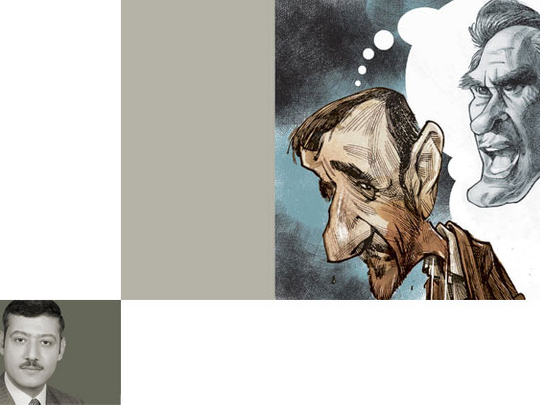
Last Sunday, the New York Times reported that Iran has agreed for the first time to one-on-one negotiations with the US over its nuclear programme. Interestingly, Iran insisted that the talks wait until after the presidential election, wanting to know with whom it would be negotiating.
Earlier in the month President Mahmoud Ahmadinejad hinted that Iran was willing to consider reducing the percentage of uranium enrichment in its active reactors and allow tougher inspection by the International Atomic Energy Agency (IAEA). These actions and statements single a retreat by Iran from its original position concerning talks with the US and its nuclear programme.
For years, Iran has rejected one-on-one talks with the US, because it did not want to appear as if they were sitting down with a country they have long demonised as the Great Satan. Iran, which views its nuclear programme as a vital national interest, has also persistently refused to give away what it dubs as its “right” to acquire nuclear capabilities. So what instigated the shift in Iran’s policy?
Iran fears that the US, particularly if the Republican presidential candidate, Mitt Romney, wins the elections, will capitalise in its increasing economic problems and the ensuing public anger to force regime change. Iran also feels more vulnerable and isolated than ever before given the waning position of its ally in Damascus. Tehran’s attitude towards the Syrian revolution shows how nervous it’s becoming from the probability that it might lose a vital regional ally.
Iran’ experience with past republican US administrations must also make it absolutely alarmed by the possibility of seeing Mitt Romney in the White House in matter of weeks. Unlike the democrats, Republican presidents have historically adopted tougher attitude on Iran.
If Romney tries to force regime change in Tehran — should he become president — it will not be the first time that a Republican administration considers intervention to decide the fate of an Iranian government. For over half a century US-Iranian relations have centred on the question of who rules Iran. During the British-Iranian dispute over the future of the Iranian oil company, the US stood by its British allies.
A covert plan to overthrow Dr Mohammad Mosaddegh, then Iran’s prime minister, was contemplated by the Eisenhower administration — Republican — and executed by the CIA in August 1953. The plan marked the first US intervention in Iran’s internal affairs, returned the Shah to the throne and made Washington the sole external player in Iranian politics for the next 25 years.
In 1979, the US tried to intervene again on behalf of the ousted Shah, but the circumstances were different this time. The revolt was on a grassroot level and the military refused to confront the mullahs who were in control of the revolution. The US opted, instead, to save Iran without the Shah. Fearful of Iran falling under Soviet influence, the Carter administration — Democrat — decided to establish contacts with Ayatollah Khomeini.
It conveyed to the Iranian leader that it had accepted the revolution and was prepared to continue an arms supply relationship with the new government. Washington was disappointed by its initial reading of the revolution when the US embassy was stormed by Iranian students and its diplomats were taken hostages.
When the Republicans returned to the White House under President Reagan in 1981 they were particularly antagonistic towards Iran. They supported Iraq in the eight-year war and had hence aborted attempts by the Khomeini government to export the revolution to other countries in the region.
The end of the Cold War, the arrival of Bill Clinton — Democrat — to the White House and the ascendance of Iran’s moderate president Mohammad Khatami marked a shift in US-Iranian relations. Barely one year after taking office, Khatami addressed the American people through CNN. He expressed respect for US culture and hoped for opening a new chapter in the relationship between the two countries. Clinton’s Secretary of State, Madeline Albright, replied by apologising for the role played by the CIA in the overthrow of Mosaddegh.
The George W. Bush administration —Republican — recruited some of the most anti-Iran figures in US policy circles. Under president Bush Iran was lumped with Iraq and North Korea as part of an “axis of evil”. After the Iraqi regime was toppled, many expected that Iran will be next in line. It was accused of trying to destabilise Iraq, undermine the Middle East peace process, develop nuclear weapons in secret and sheltering Al Qaida elements.
If Romney wins the election on November 6, Iran’s worst nightmare would have become true. Romney will most probably bring back most — if not all — of the Bush Iran team. These people think that there is some work left from the previous Republican administration and that it needs to be finished with Iran. For all these reasons, Tehran must be desperate to start some sort of a dialogue with Washington before things turn really bad.
Dr Marwan Kabalan is the dean of the Faculty of International Relations and Diplomacy at the University of Kalamoon, Damascus.









